Office public spaces are communal areas within an office environment designed for shared use by all employees. Unlike private offices or individual workstations, these spaces are intended to promote interaction, collaboration, and a sense of community. They encompass a variety of settings, each serving different purposes to meet the diverse needs of the workforce.
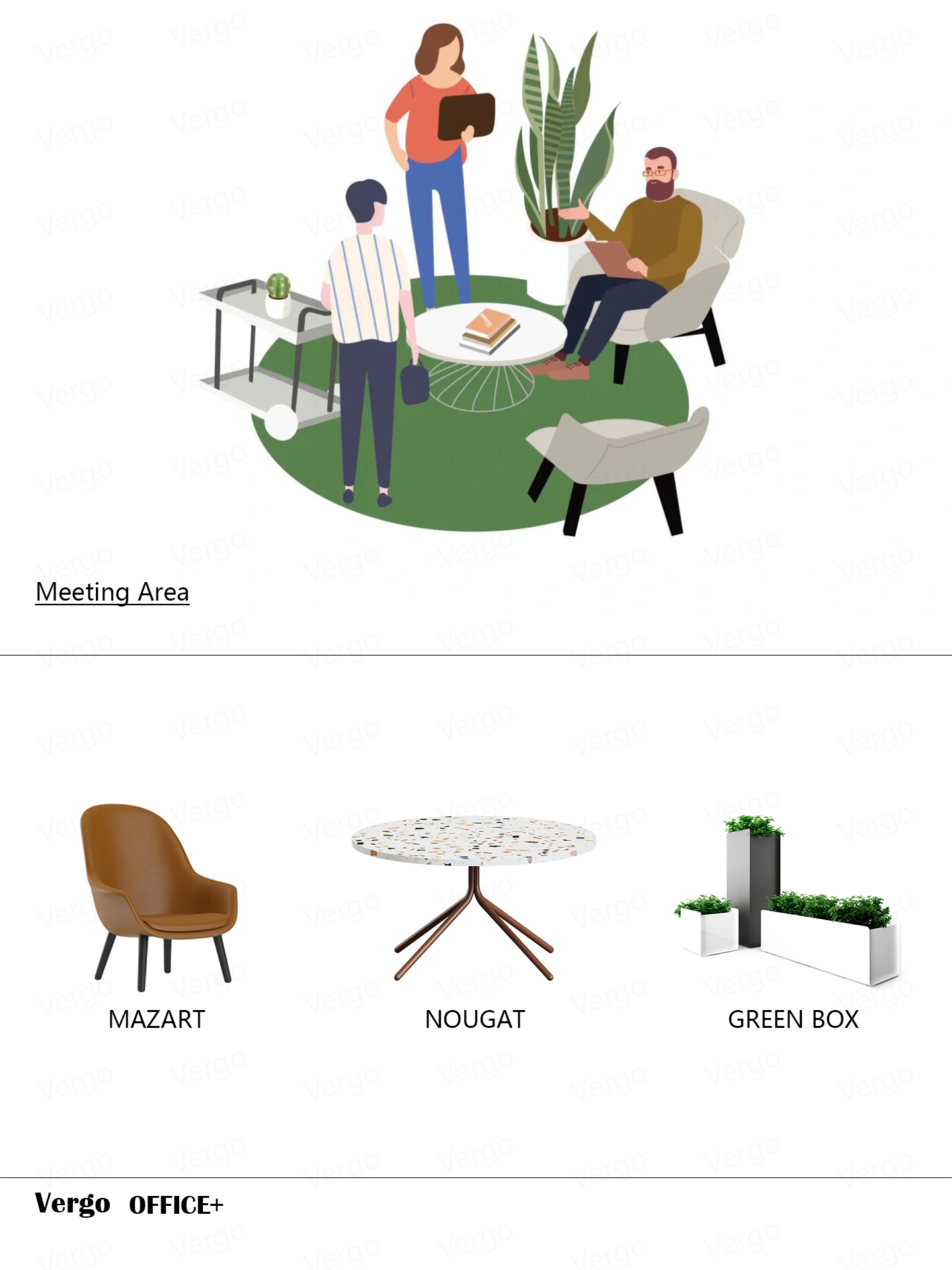
A meeting area is a designated space within an office where employees gather for discussions, presentations, and other collaborative activities. These areas can range from small huddle spaces to large conference rooms, each serving specific purposes based on the nature of the meetings.
Meeting area:
- Purpose: For quick, informal meetings or spontaneous discussions.
- Features: Small tables, a few chairs, and sometimes a whiteboard or screen for quick notes and presentations.
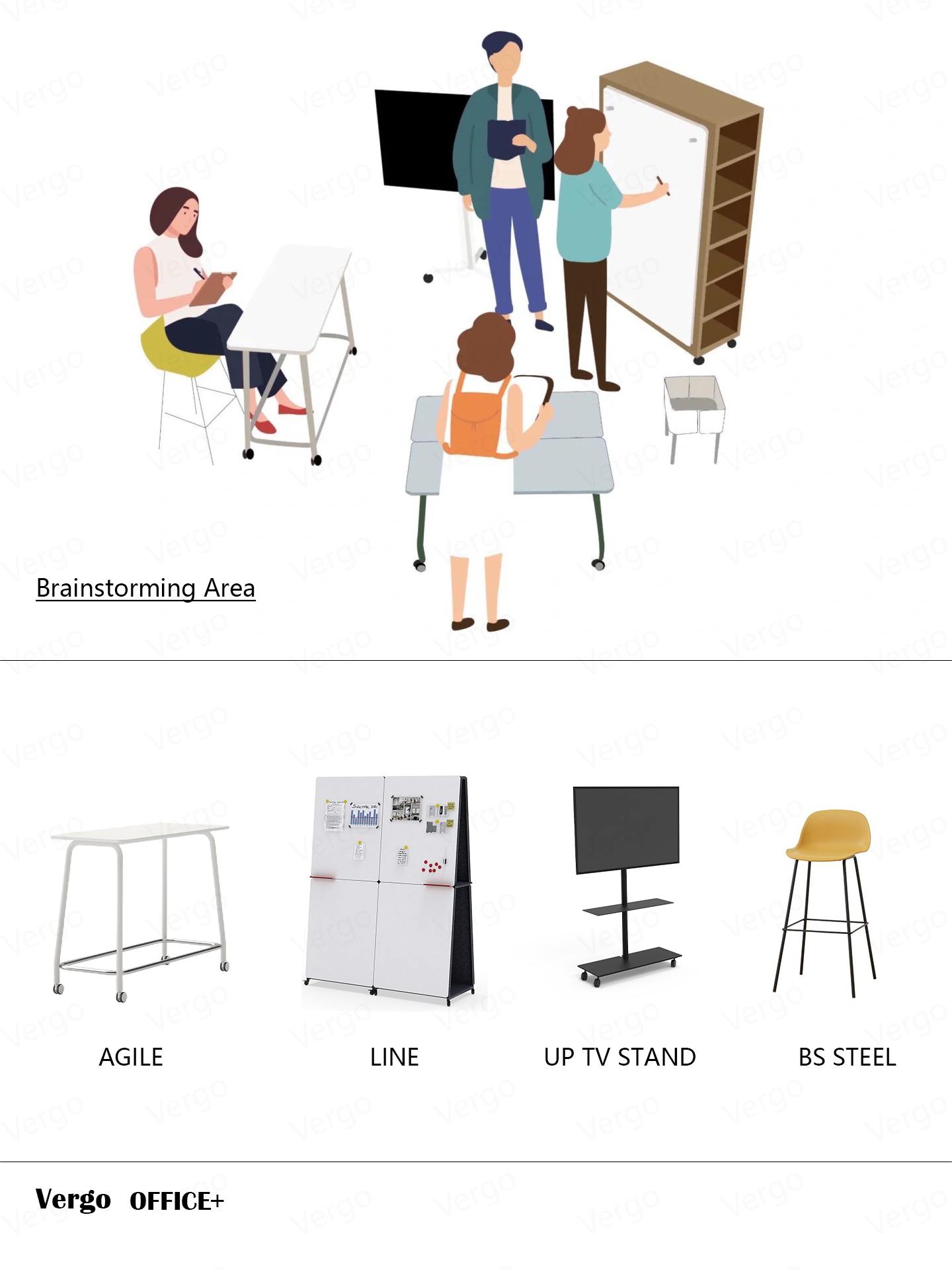
An office area set aside for the purpose of generating ideas and stimulating creativity is called a brainstorming area. These spaces are frequently furnished with adjustable chairs, whiteboards, sticky notes, and other equipment to promote collaborative and spontaneous dialogue.
Brainstorming area:
- Purpose: For formal meetings, presentations, and discussions that require privacy.
- Features: Long tables, comfortable chairs, UP TV stand, whiteboards, and sometimes video conferencing tools.
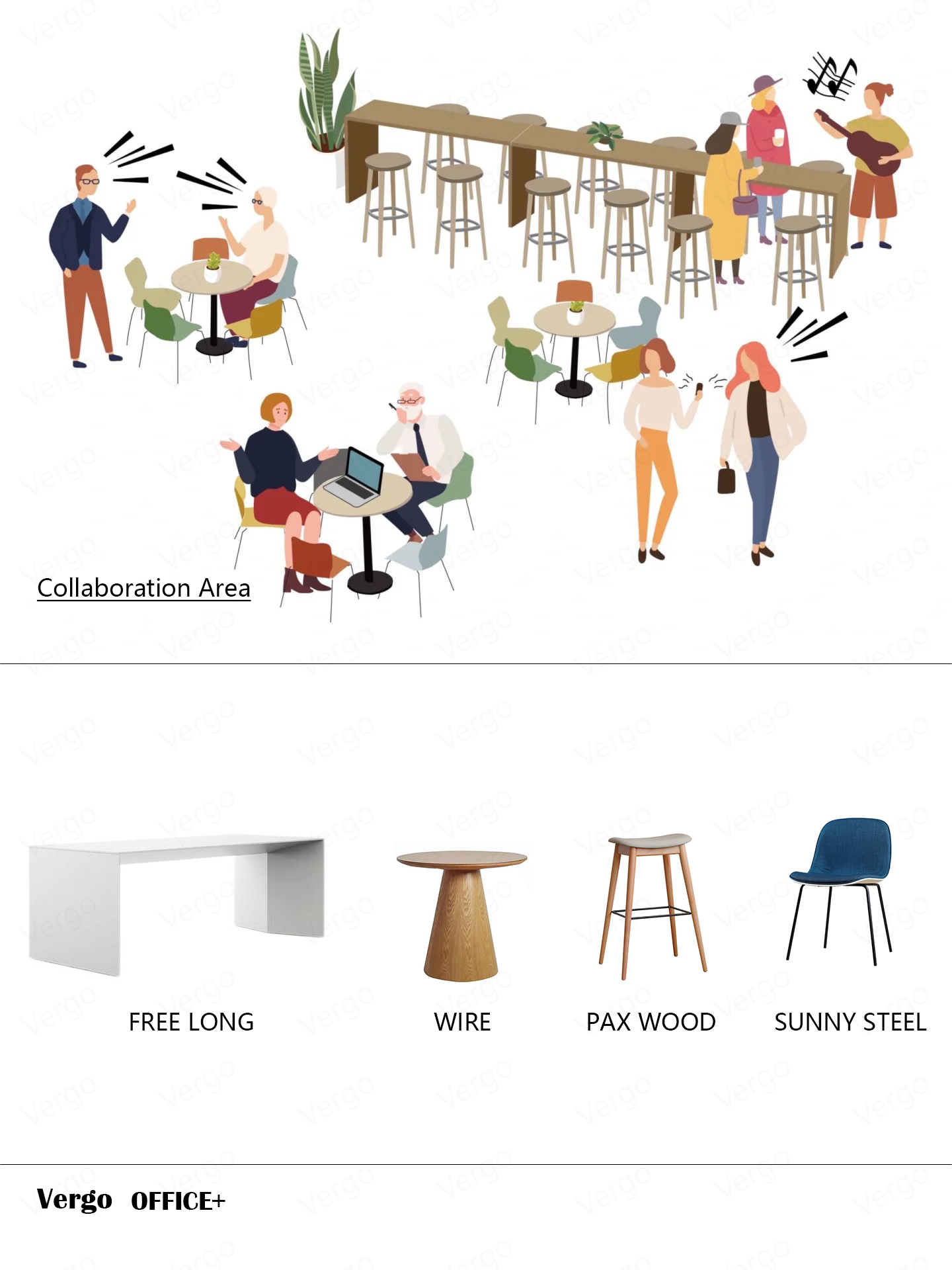
A collaboration area is a designated space within an office where employees can work together on projects, share ideas, and engage in group discussions. These areas are typically more informal than traditional conference rooms, providing a flexible environment that encourages creativity and dynamic interaction
Collaboration area:
- Purpose: Designed for team meetings, brainstorming sessions, and collaborative work.
- Features: Includes sofas, armchairs, stools, long tables and modular furniture that can be rearranged to suit different group sizes and activities.
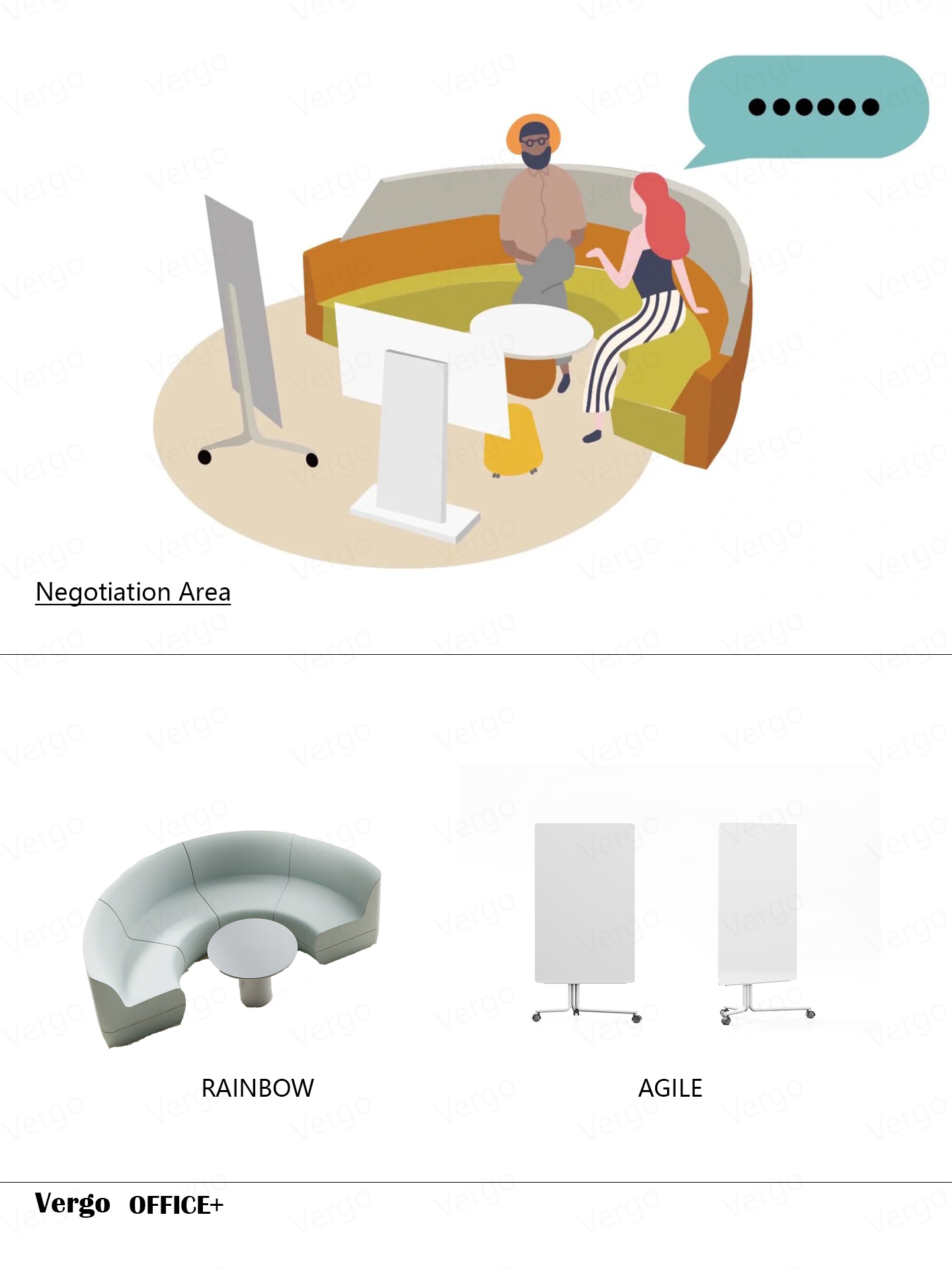
A negotiation area is a dedicated space within an office where employees, clients, and stakeholders can engage in discussions aimed at reaching agreements. This space is designed to provide a comfortable, neutral, and professional environment conducive to productive negotiations.
Negotiation area:
- Purpose: Space for discussions, businesses can ensure that negotiations are conducted in a setting that promotes effective communication, fairness, privacy, and focus.
- Features: Provide comfortable, ergonomic chairs, modular sofas to ensure all parties can sit comfortably for extended periods.
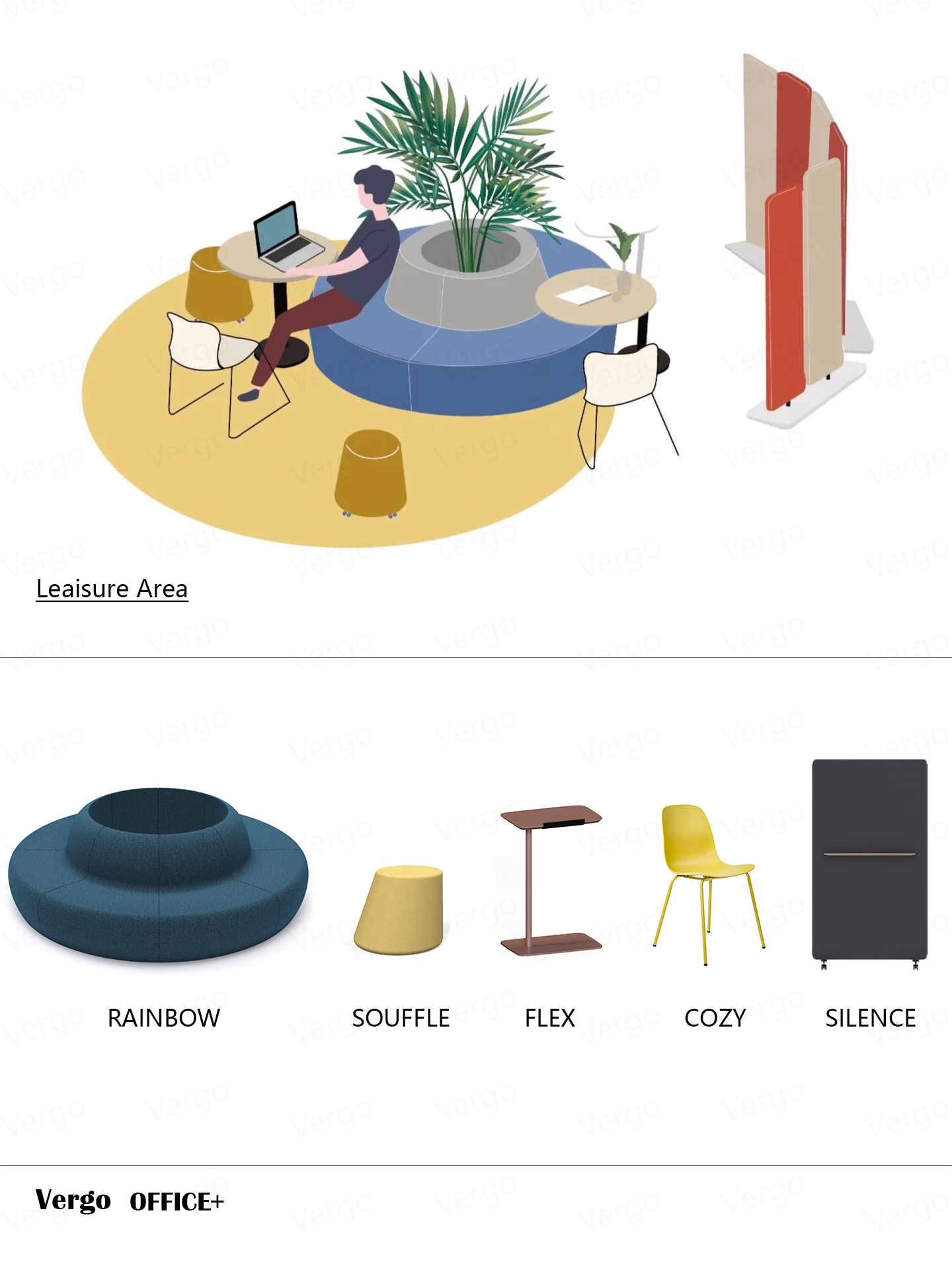
A leisure area, also known as a relaxation zone or break room, is a designated space within an office where employees can unwind, recharge, and connect with their colleagues outside of work tasks. The primary purposes of a leisure area include:
Leisure area:
- Purpose: Offering a space for employees to take breaks helps prevent burnout and promotes overall well-being.
- Features: Include a mix of seating options such as sofas, lounge chairs, poufs, coffee table, divider and bar stools to accommodate different preferences.
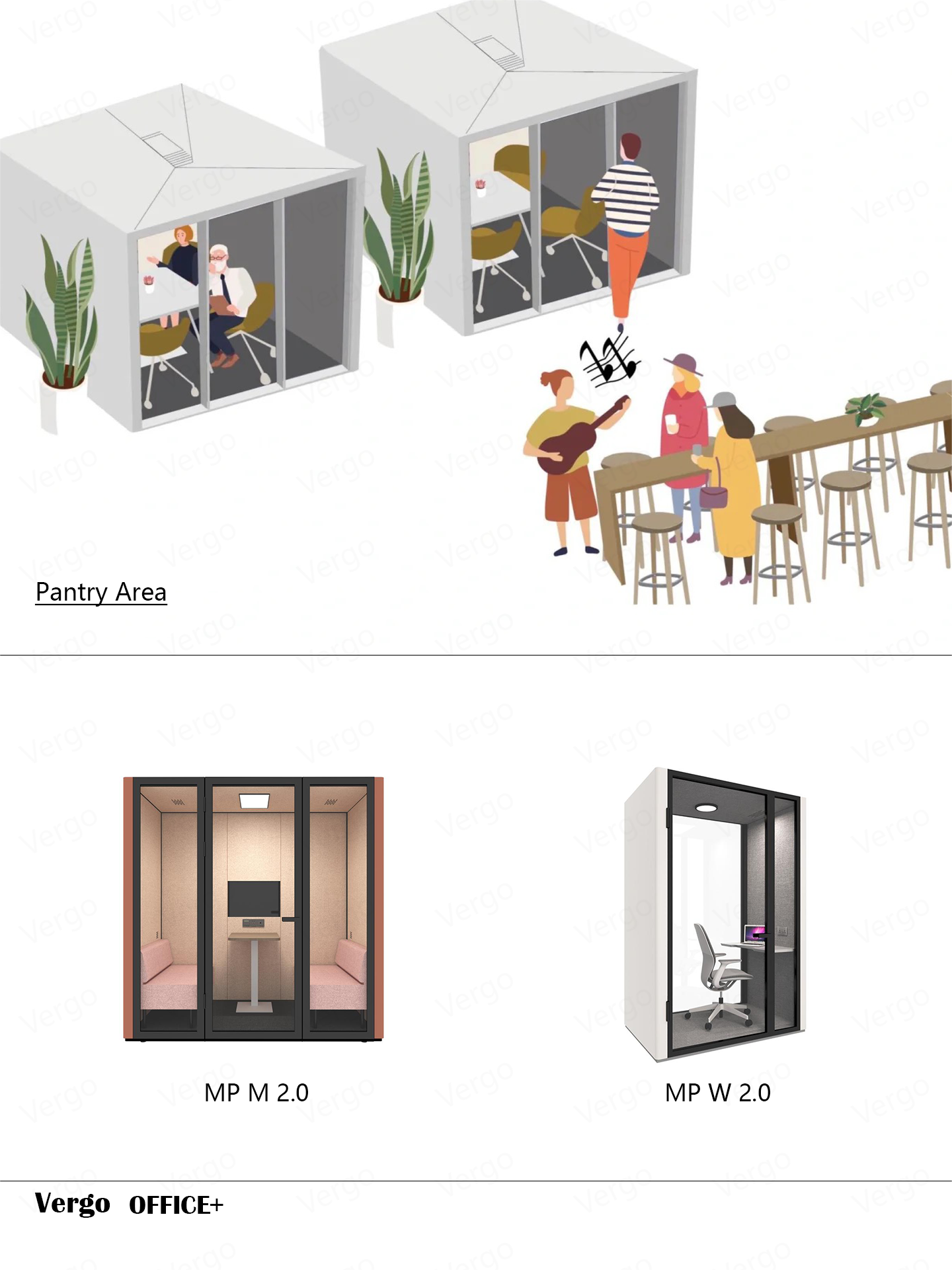
The pantry area, also known as the break room or kitchenette, is a central space within an office where employees can relax, refuel, and connect with colleagues. It serves several important purposes.
Pantry area:
- Purpose: The pantry area provides an informal setting for employees to socialize and build relationships beyond work tasks.
- Features: Install high tables and bar stools to accommodate quick meetings or collaborative discussions. Designate quiet zones like using office pod or move pod where employees can retreat for moments of solitude or focused work away from their desks.
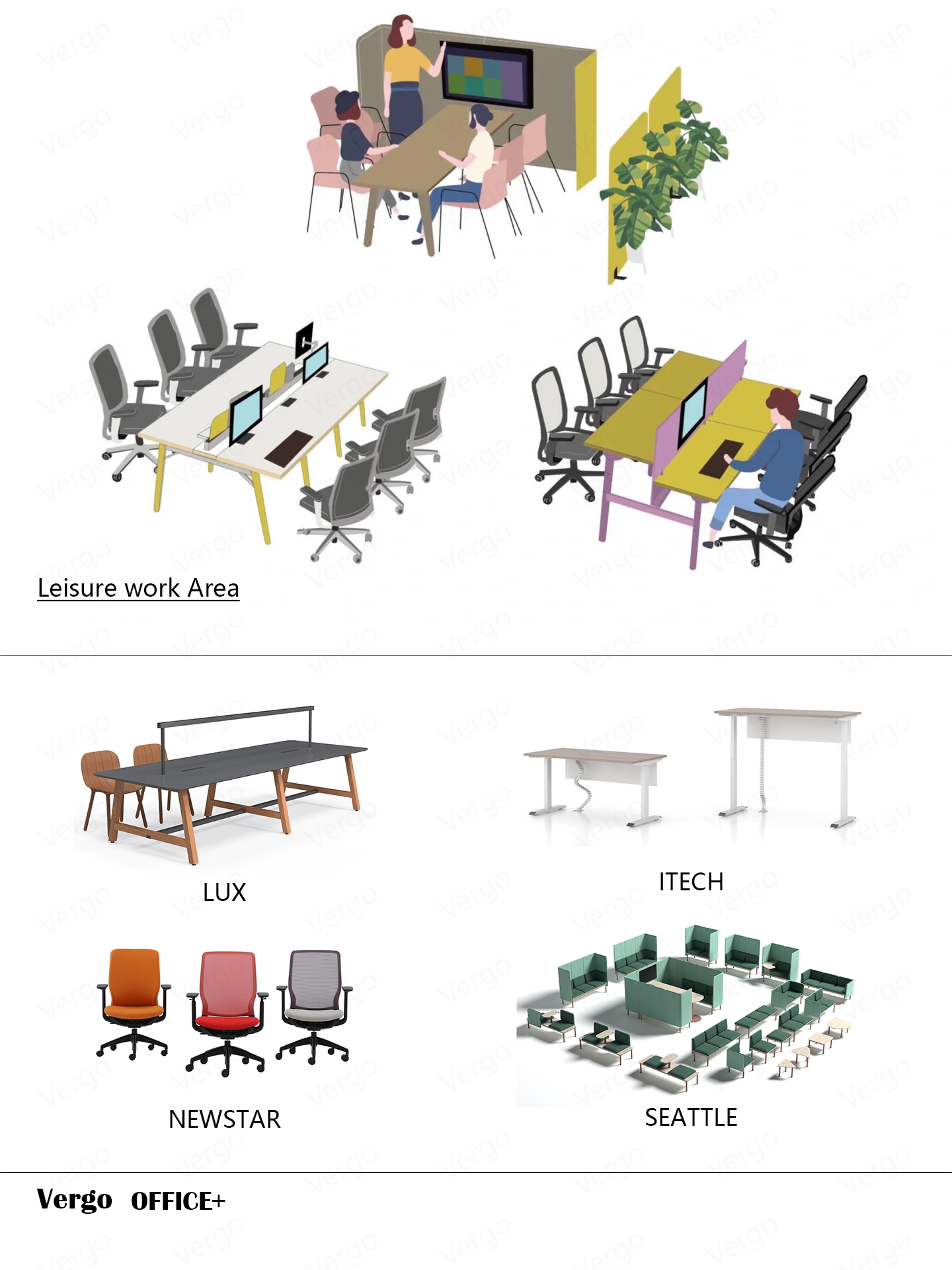
The work area, often referred to as the workstation or workspace, is the designated area within an office where employees carry out their daily tasks and responsibilities.
Work area:
- Purpose: The work area provides employees with a dedicated space to focus on their tasks and maximize productivity.
- Features: Invest in ergonomic chairs with adjustable features and height adjustable table to support proper posture and reduce the risk of discomfort or musculoskeletal issues. Additional accessories can enhance comfort and alleviate strain during long periods of sitting.

















